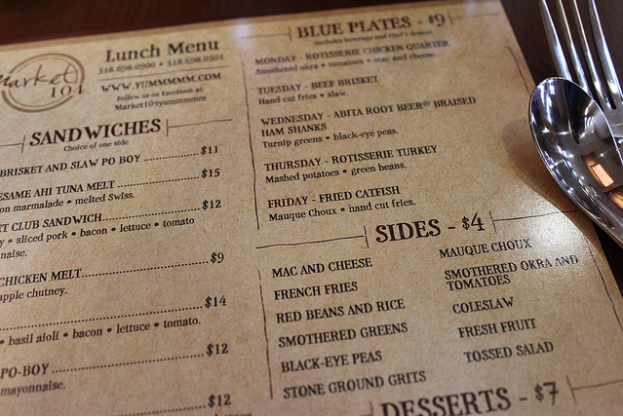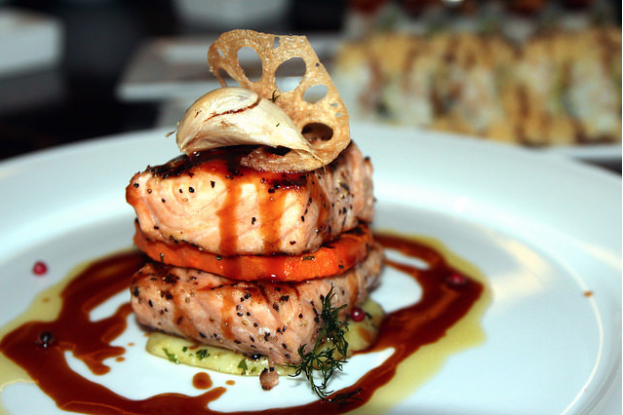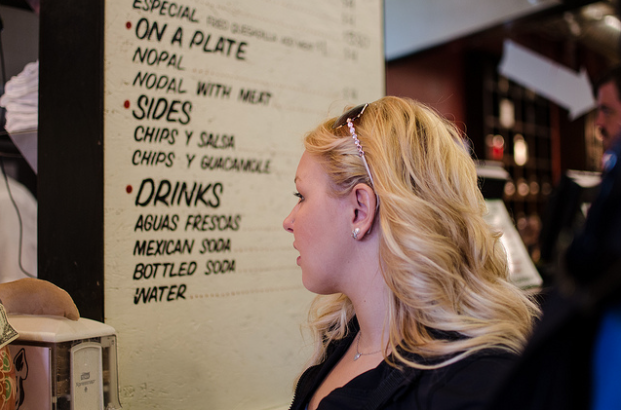 (Source: Flickr)
(Source: Flickr)
When it comes to your restaurant menu, bigger does not necessarily equal better. As a matter of fact, in recent years, there’s actually been a trend toward downsizing menus for better focus and overall success in dining establishments.
There are many benefits to reducing the size of your menu. A smaller menu can help streamline and improve the ordering process and service, and it can also help create a more efficient and far more cost effective kitchen. It also helps your restaurant really focus on what it does best, which means that you’ll improve the overall customer experience.
Ready to see for yourself how downsizing your menu can benefit your restaurant? Here, we’ll discuss ten compelling reasons why you might want to make your menu smaller.
You’ll gain clarity on your restaurant concept. When you reduce the size of your menu, your offerings are distilled down to reduce extraneous dishes that aren’t in line with your overall concept. This means that each and every dish that is left can be a more pure reflection of your restaurant’s concept.
For example, if you run a burgers-and-fries establishment, it might make sense to offer burgers, veggie burgers, hot dogs, and grilled cheese; however, offering three types of soup and four types of salad on a daily basis might not make as much sense. If it’s not what people come to your establishment to eat, why offer these items, particularly if they are costly to make and require that you stock extra ingredients?
Reducing items which don’t fit your restaurant’s concept frees you up to focus on what is important to your business, and sharing with your customers the dishes which reflect your vision. 
(Source: Flickr)
It will emphasize your chef’s strengths. Have you ever heard the term “jack of all trades, master of none”? Basically, it means that when spread too thin, there’s no mastery of a single task. This is true with cuisine, too. If your chef is trained in making beautiful french cuisine, his or her talents are probably not best utilized creating the hummus plate or flatbread appetizers that you added to the menu to try to please the crowds.
With a smaller menu, you can reduce “clutter” from the menu and focus on your chef’s strengths. It’s understandable to want to put people-pleasing dishes on your menu, but if they aren’t emphasizing your chef’s strengths, they won’t captivate your customers, and chances are, the chef is getting burned out making food that doesn’t excite him or her. With a smaller menu, each dish will showcase the best your chef has to offer.
It makes ordering easier. From an ordering standpoint, a smaller menu is far superior than a large one. When a customer is bombarded with too many different choices, it can be overwhelming. There is actually evidence that when faced with too many choices, customers get “decision fatigue” and end up feeling unhappy about any of them.
However, if your menu is smaller and designed in a simple, easy to read layout, deciding what to order is going to be far easier (and quicker) for customers. This will make things simpler for the servers, too–which will make their jobs more enjoyable, and help your employees feel appreciated.
It makes customization easier. Increasingly in recent years, there has been a high demand for customization of menu items. This is partially due to the rising awareness of such food conditions as gluten sensitivity or intolerance, as well as the rising popularity of particular diets which are adopted for either health or ethical reasons such as vegan, paleo, and low-carb diets.
Many restaurants have responded by expanding their menus, offering separate dishes that are suitable for each diet. However, there is a solution which can actually keep your menu smaller: simply offer more customization of the (fewer) dishes that you offer, so that meals can be made to suit a variety of diets. It will increase the reach of your restaurant’s menu while still maintaining a small size.
 (Source: Flickr)
(Source: Flickr)
Create a boutique feel. When you go into a greasy spoon diner, you expect a mile-long menu with all sorts of options. However, when you walk into a high end restaurant, such a menu can come off as cheap and low class–remember the “decision fatigue” discussed in #3?
Think of your restaurant menu like a retail boutique. You want each menu item to be a standout in your display. By having a shorter menu, it instantly shines a spotlight on each dish, which gives your establishment a more high-end feel.
 (Source: Flickr)
(Source: Flickr)
It makes your kitchen more efficient. A shorter menu will make your kitchen more efficient in a number of different ways. Here are just a few:
First, it will save you time. Stocking supplies for fewer dishes means that you’ll need to order fewer individual items. This could even reduce the amount of food vendors you need to work with, too, which will save you time in reducing the number of invoices you have to deal with at the end of each month.
Second, it can save you money. Even though you might be ordering fewer individual ingredients, you’re probably ordering in greater bulk, which may mean that you can negotiate a better deal with your vendor and keep food costs down.
Third, a smaller menu will help you reduce food waste. With fewer items on the menu, it’s easier to keep track of how much you need of any given ingredient, so you’re less likely to find yourself with an excess. Not only will this have a great effect on your bottom line, but it will make your restaurant more sustainable and environmentally friendly, too!
Conclusion: Reducing the size of your restaurant menu can have a huge effect on your restaurant’s profits. A smaller, stronger menu can result in more efficient service, more consistent cooking, and an overall improved customer experience. Consider where you could “trim the fat” from your restaurant menu to make your business more nimble!
How large is your menu?


